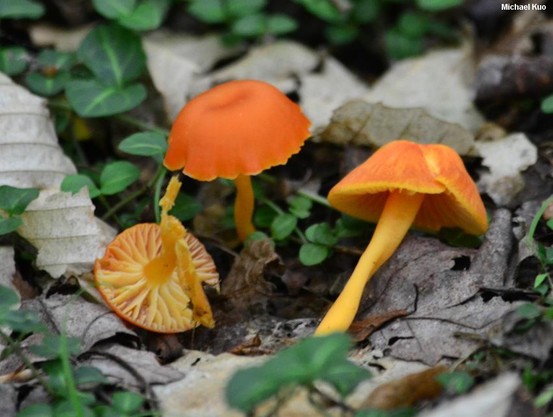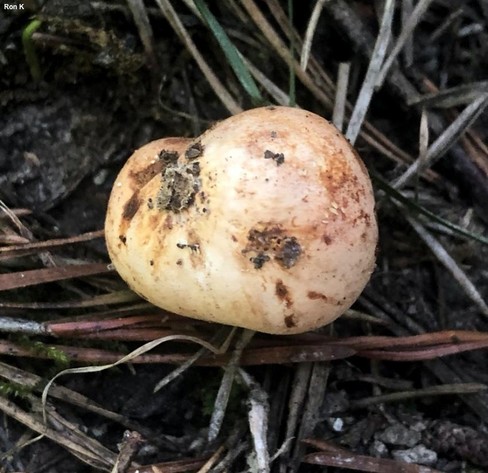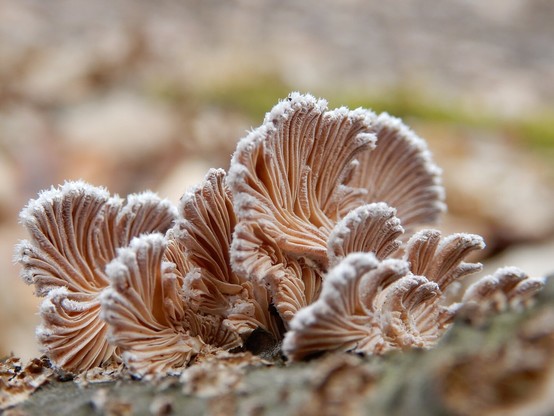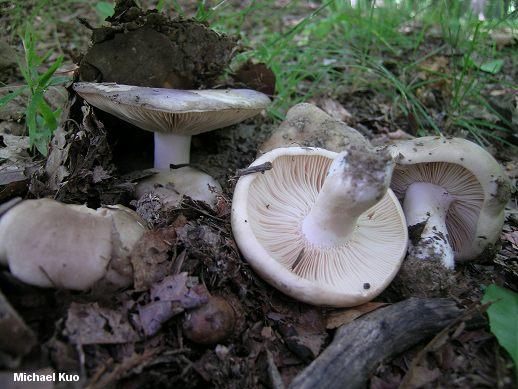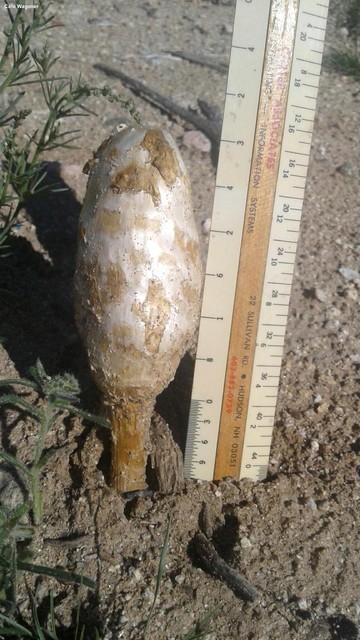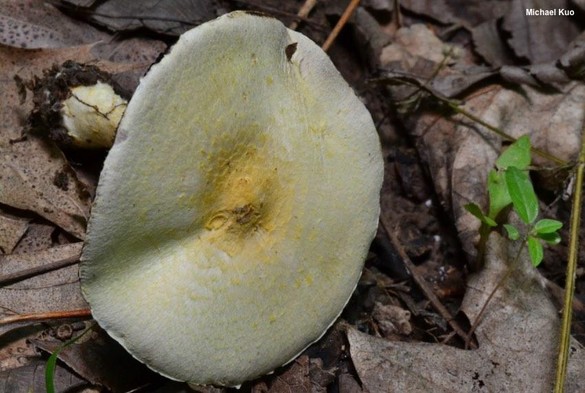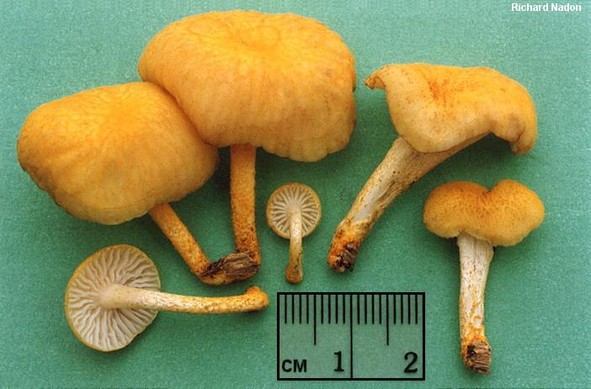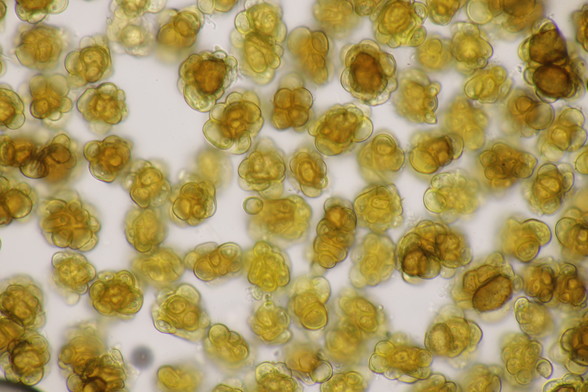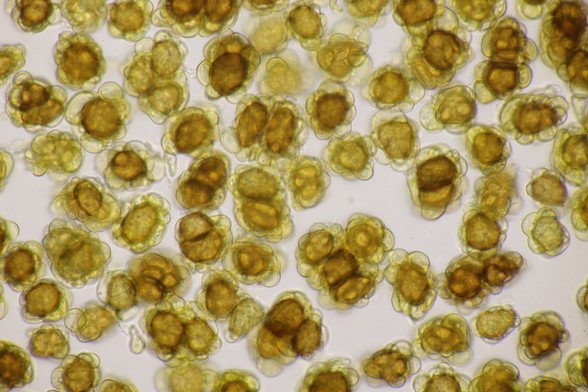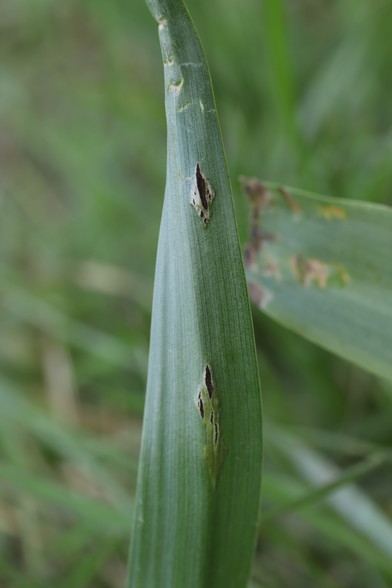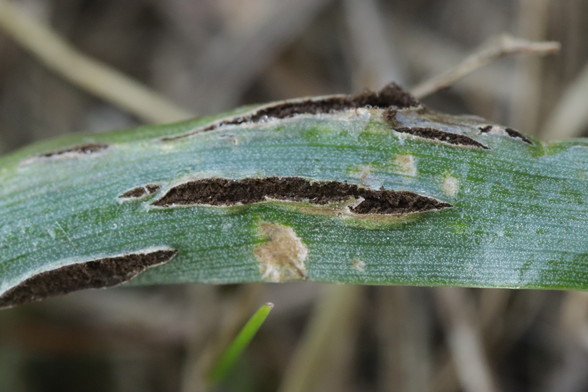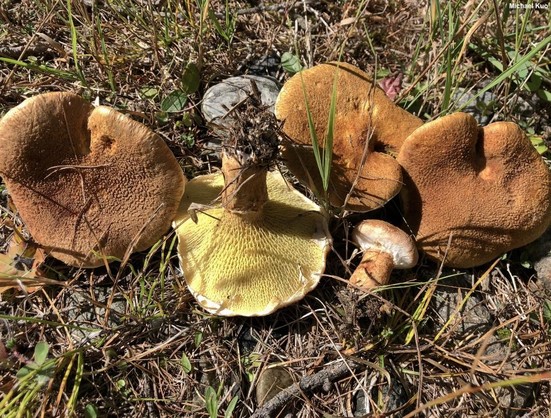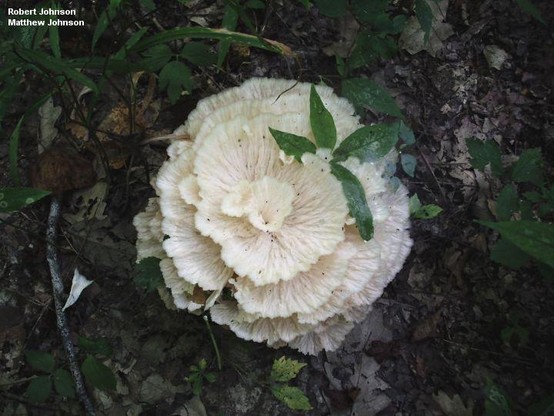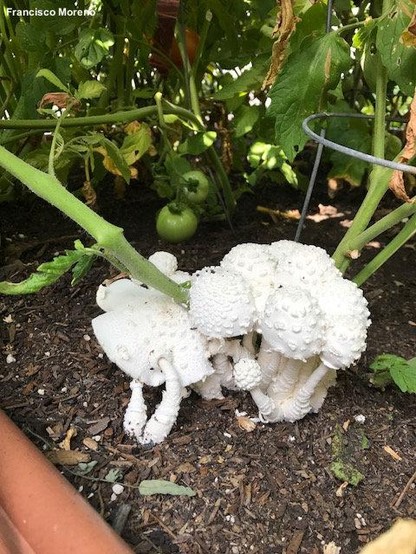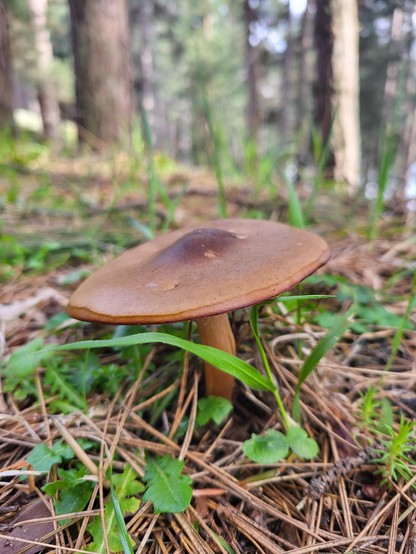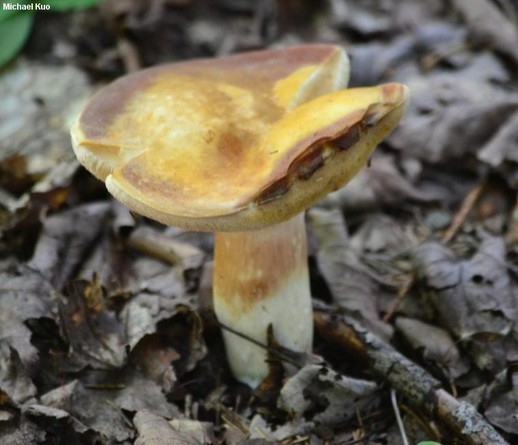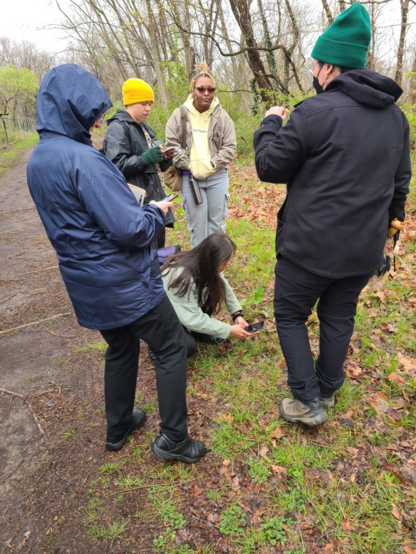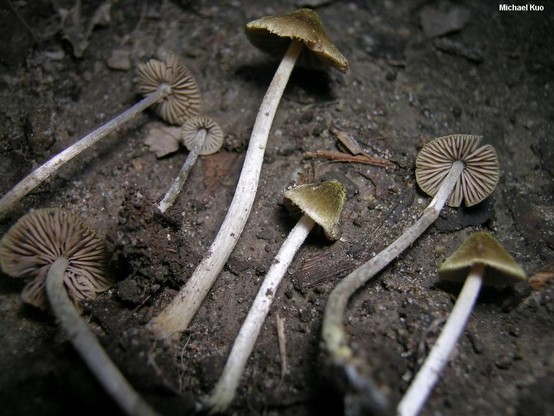Hygrocybe reidii
https://www.mushroomexpert.com/Hygrocybe_reidii.html
Ecology: Precise ecological role uncertain (see Lodge and collaborators, 2013); growing scattered or gregariously under hardwoods or conifers; summer; North American distribution uncertain (it is reported from Québec, North Carolina, and Minnesota in online records). The illustrated and described collections are from Michigan and Pennsylvania.
Cap: 2-3.5 cm; convex, becoming broadly convex to planoconvex or broadly bell-shaped; bald or, under a lens, very finely fibrillose; lubricous when fresh but not sticky; bright orange; the margin scalloped when young.
Gills: Broadly attached to the stem; nearly distant; pale orange, fading to yellow; short-gills frequent.
Stem: 3-5 cm long; 3-5 mm thick; more or less equal; dry; bald; pale orange, fading to yellowish; white at the base.
Flesh: Pale orange; unchanging when sliced.
Odor and Taste: Odor (best detected when specimens are drying or have been recently dried and packaged) strongly sweet and slightly foul, reminiscent of honey going bad; taste not distinctive.
Chemical Reactions: KOH negative on cap surface.
Spore Print: White.
Microscopic Features: Spores 6-10 x 4-5 ; smooth; ellipsoid; smooth; hyaline in KOH; inamyloid. Basidia 2- and 4-spored; to about 55 long. Hymenial cystidia absent. Lamellar trama parallel or nearly so. Pileipellis a cutis.


